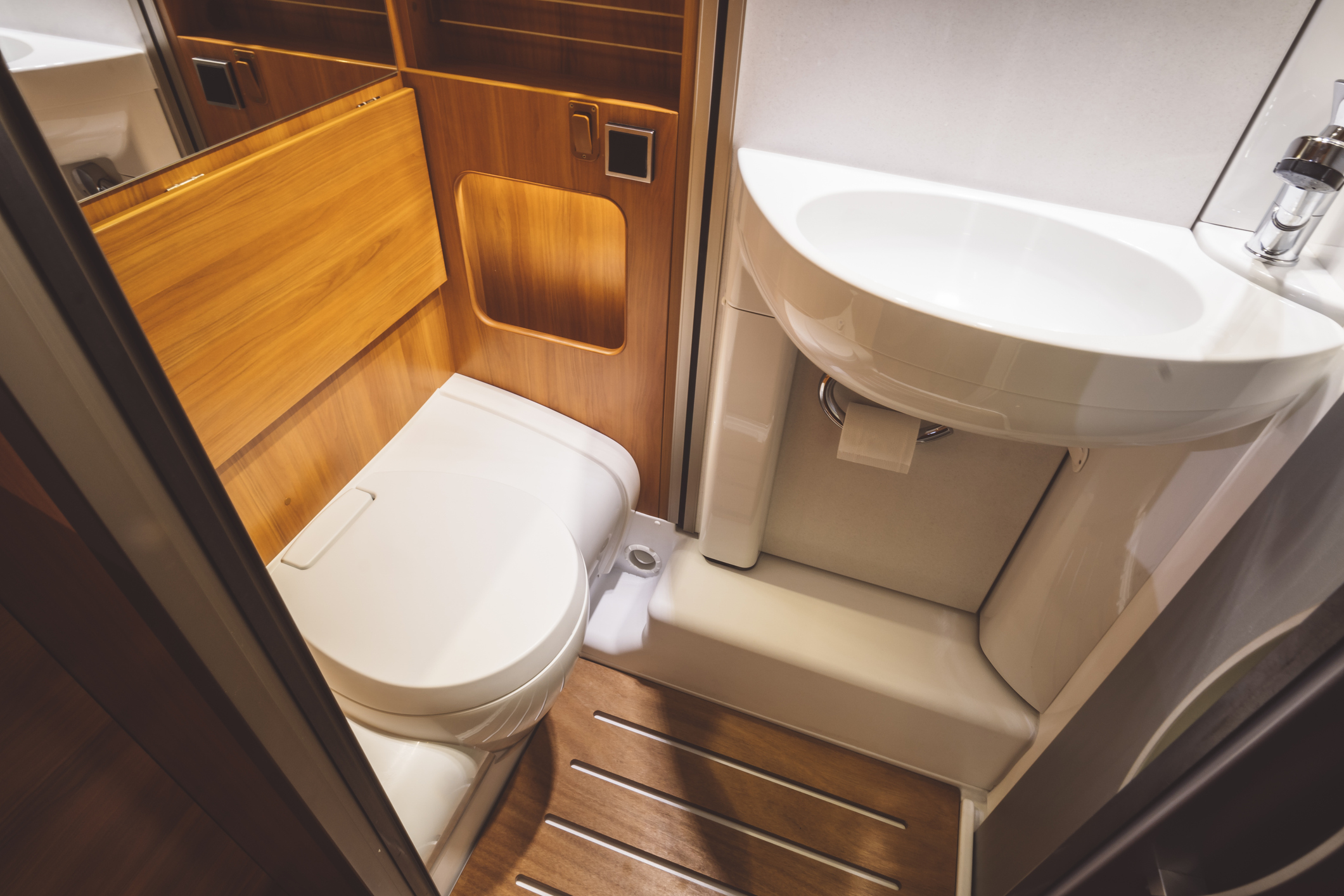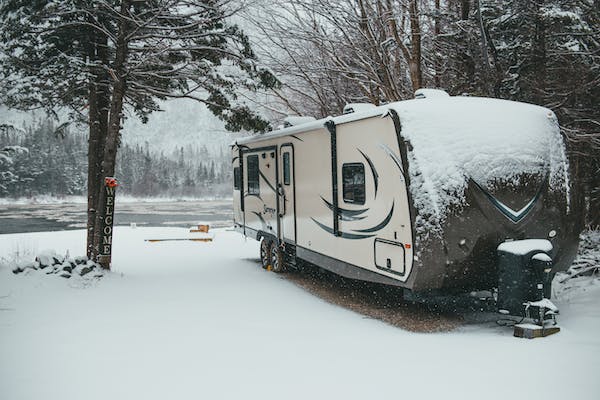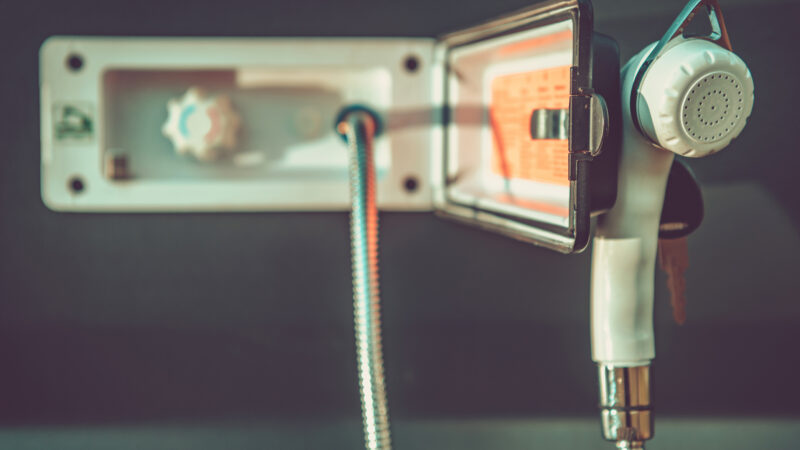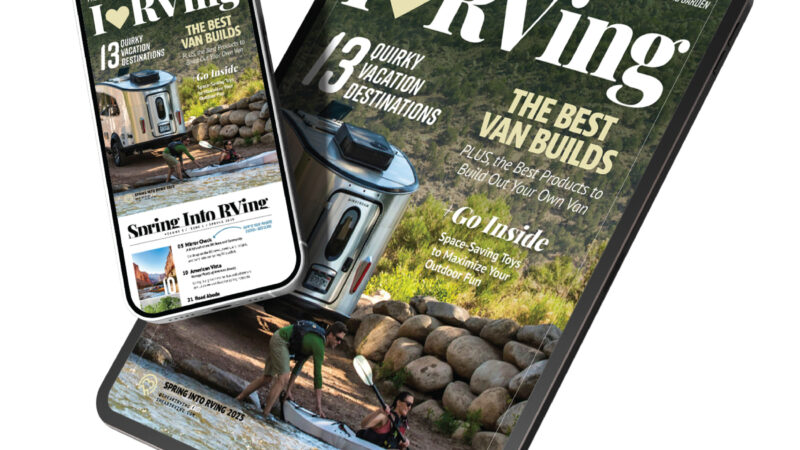How to Unclog an RV Toilet | I Heart RVing

A clogged RV toilet can spur panic. However, it’s pretty easy to fix. Because an RV is a self-contained unit, the plumbing system is nowhere near as complicated as it is in a typical house.
That’s not to say unclogging can’t be a dirty job — it can be. Learning how to take the right actions fast and prevent clogs in the first place is beneficial. Here’s what you need to know about how to unclog an RV toilet.
Understanding the Causes of RV Toilet Clogs
An RV’s plumbing system is slightly different and simpler than a home’s. Home plumbing systems empty into the sewer or your septic tank, while the stuff in an RV’s toilet goes directly into the blackwater tank, where it remains until you dump it.
That’s good news. With home clogs, the problem can lie anywhere between the fixture and the street. There are only a few spots for toilets to clog on RVs, regardless of whether you tow a tiny teardrop or drive a lengthy Class A model. There’s a much shorter sewer line attached to the blackwater tank, and you can access it without a backhoe.
RV toilet clogs frequently result from the same issues clogging home toilets — flushing inappropriate objects. Such problems don’t only occur when Junior decides to give his toy cars a spin at the “car wash” — supposedly “flushable” wipes that don’t biodegrade are a common culprit.
Diagnosing the Problem Effectively
The vast majority of clogged RV toilets occur from flushing something you should not — but there’s another unique twist. While your home toilet refills the water in the tank by using a float-ball mechanism, RV toilets follow a simpler compost style. This design prevents you from inadvertently flushing your freshwater supply down the drain, but it can result in the dreaded “poop mountain” if you don’t maintain your blackwater tank correctly.
Remember, your blackwater tank is simply an enclosed holding area beneath your toilet — you can see it by looking under your RV. However, to empty the waste, everything in the tank must be liquified to flow through the sewer line. Otherwise, waste simply builds up in there until you have a miniature manure pile on wheels. For your RV toilet to work correctly, you need two things — water and enzymes.
Water acts as a necessary catalyst, jump-starting the liquefaction process. Enzyme tablets such as Valterra Odorlos break down toilet paper and reduce odors. You must add these every time you dump your blackwater tank. Failure to do so is perhaps the most common cause of RV toilet clogs besides flushing what you shouldn’t.
Tried and Tested Methods of Unclogging
Fortunately, the easiest method of unclogging an RV toilet is also the least messy. It involves adding the requisite water and enzymes, letting time do its magic and hoping for the best. Follow these steps:
- Park near an approved dumping location.
- Add water until the blackwater tank reaches full capacity.
- Add an approved blackwater tank cleaner, such as Commando.
- Wait 12 to 24 hours before attempting to drain your tank.
This method also works if a piece of paper or other debris blocks your blackwater tank sensor — which happens often. Your blackwater tank sloshes around quite a bit during transit, and a common RV experience is seeing your sensor indicate that your blackwater tank is full, even though you just drained it.
You may need to repeat this method more than once if a blocked sensor is your issue. However, you can easily tell if it fixed the clog when your blackwater tank drains smoothly.
Preventive Measures to Prevent Future Clogs
It bears repeating that preventing RV clogs is far easier than removing them. Each time you drain your blackwater tank, you need to add 1.25 gallons of water for every 10 gallons of tank capacity and an enzyme tablet. Otherwise, the dreaded “poop mountain” will result.
However, enzymes don’t break down everything. Just say no to using the following in your RV if you want to prevent clogs:
- “Flushable” wipes
- Multi-ply toilet paper — look for brands specifically labeled for RV and boat use
- Hair, kitty litter or food scraps
Advanced Techniques for Stubborn Clogs
Occasionally, simple solutions fail. If you still must figure out how to unclog your RV’s toilet after trying the above solution, the issue is likely a foreign object lodged in the sewer line.
Fortunately, while you must get down and dirty, it’s still easier than fixing a home clog. You’ll need the right wrenches and screwdrivers to remove your sewer line. Then, take a garden hose and blast that baby out until the clog breaks up. Occasionally, you may have to replace the sewer line, but this method works most of the time.
On rare occasions, you may need to replace your blackwater tank. Here, too, you can DIY, although you may need specialized tools and extra hands — and it can get quite messy. In most cases, you’re best off finding an authorized repair shop.
Final Thoughts and Recommendations
It’s not difficult to master how to unclog an RV toilet. Using water and enzymes is often enough, and there’s easy access to the sewer line if you must explore further. Following a few simple steps is all it takes to keep your RV toilet functional and fresh.
Source: https://iheartrving.com/blog/how-to-unclog-an-rv-toilet/







